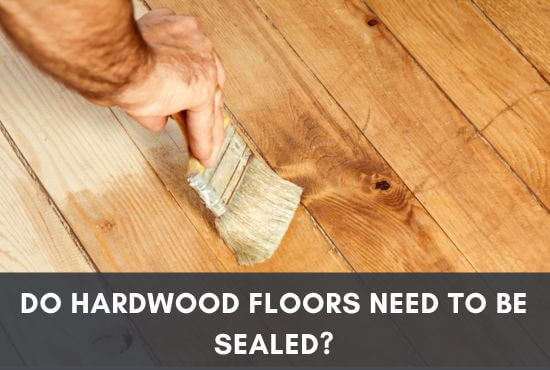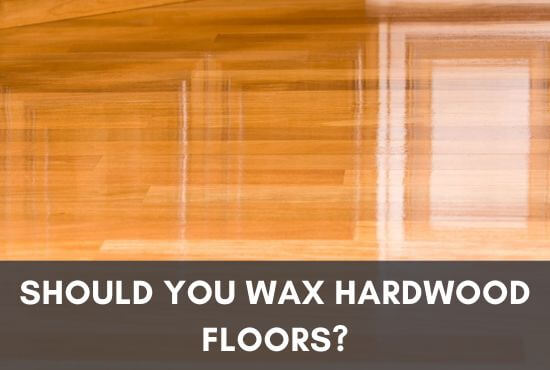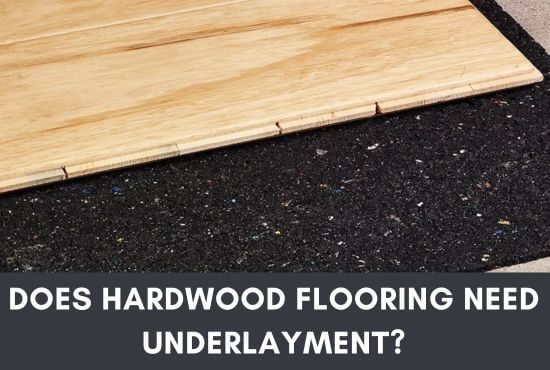If you have hardwood floors in your house and there is a reasonable amount of traffic that they receive on a daily basis, chances are high that your floors will get stained very often and very easily. There is no need to worry in this situation as it is part of the process.
You can only limit the amount of stains on your floors through some precautionary measures but it is not possible to completely eliminate any stain. Hence, you need to adapt some cleaning techniques to remove the stains from your hardwood floors and keep them clean.

There are many ways to clean hardwood floors and remove stains from the surface depending upon the type of the stain but if you are looking for a universal solution; you can never go wrong with vinegar and dishwashing detergent.
These items have all the cleaning and disinfecting properties that you would want in a hardwood floor cleaner even if you do not know the type of stain on the floors, this solution can help you remove it without any doubt.
However, there are some other factors which need to be looked upon before you can start your hardwood floor cleaning process.
For instance, identifying the type of finish on the floors to choose the right stain removal technique is an important step which many homeowners tend to miss out on.
Hence, make sure to read the entire passage to understand the procedure and offer the best cleaning to your hardwood floors.
Table of Contents
- 1 How To Remove Different Types Of Stains From Hardwood Floors?
- 2 How To Remove Pet Stains From Hardwood Floors?
- 3 How To Clean Heated Stains From Hardwood Floors?
- 4 Will Vinegar Remove Wood Stain?
- 5 How To Identify Different Types Of Stains If We Don’t Know The Cause?
- 6 Is Ammonia Suitable For Removing Wood Stains?
- 7 Takeaway
How To Remove Different Types Of Stains From Hardwood Floors?
Although the procedure of removing stains might vary according to the type of stains present on your hardwood floors, all of them feature the same initial process of cleaning the surface and buffing it out (if finished) to ensure that the surface is ready for cleaning.
Moreover, before you can remove different types of stains on your hardwood floors, it is important to identify the finish you have (if any) on your hardwood floors.
This is extremely important as you will formulate the cleaning method accordingly so as not to damage the surface of the wood or the finish layer.
Test The Surface For The Type of Finish
Testing the surface for the finish is quite simple as there are mainly two types of finishes; wax and polyurethane. Firstly, you must find a spot on the side of the floor that does not receive too much traffic.
This is because you don’t want to test for the finish in a high-traffic area where the finish might already be worn out, and you end up pouring the solvent on the wood directly and damaging your hardwood floors.
Hence, once you have found this spot, you can pour mineral spirits into the area.

If you are wondering what mineral spirits are, they are petroleum-derived clear liquid solvents. It is not a rare or unique product; you can easily find it in your area’s regular home improvement store.
Once you have poured the liquid, let it stay on the surface for a few minutes to react and give you the results.
Afterwards, you must wipe the surface with a clean wipe or cloth. If the wipes are clean, there is a high chance that your floors are finished with polyurethane, but if there is a brown or shiny residue, you must know that your floors are wax coated.
Once you have identified the right type of finish on your hardwood floors, you can move towards removing different stains.
All of the methods that you adopt should be safe and must not hurt the finish or the wooden surface under any circumstances.
It is best to refrain from using steel wool or other items that can scrape the finish and cause scratches on the surface of your hardwood floors.
Make sure to use gentle and gentle products and do not adopt an aggressive approach towards cleaning.
Cure Darkened or Discolored Floors
For floors which have been darkened due to a buildup over the years, you can easily clean them with vinegar, bleach, or any other acidic substance.
The acid cuts into the buildup layer, removing the bacteria and ensuring that the hardwood floors are not damaged.

It causes the buildup and the stains to loosen up so they can be rubbed off the surface without much effort.
- Dilute the vinegar or bleach in the recommended quantities and pour them into a spray bottle.
- Apply the vinegar or the cleaning solution to the affected area and let it sit for at least an hour. This time is necessary to allow the solution to react with the stain or the buildup layer and allow easy removal.
- Once this time has passed, make sure to scrub the surface with an old toothbrush or a scrubbing brush.
- Then, you must use a clean cloth to collect and remove any remnants of residues from the surface.
- After this, make sure to clean the surface with fresh water to rinse off any solution or stain on the surface.
- Dry up the surface immediately and use a wood conditioner or a small amount of varnish on the area to ensure proper protection.
- Buff the varnish to blend with the surroundings and make your hardwood floors look spotlessly clean.
After this procedure, your hardwood floors will look as good as new, and the stains will surely be removed.
Heel Marks
Heel marks are common on hardwood floors, especially in commercial areas which receive a significant amount of traffic. They are caused by the immense pressure exerted on the surface by the heel of a lady’s shoe.

This results in a minor dent on the surface that is not wide enough but a little deep that the naked eye can notice.
Removing such marks is very easy if you have waxed floors. You would need to identify the type of wax used and take a small amount at the same time and apply it to the marks.
Once applied, you can use a ball of fine steel wool to rub it in and blend it with the existing finish. Then take a lint-free cloth and buff the area to make it shine and prevent it from becoming dull.
However, if you have a polyurethane finish, it can be hard to repair as the poly finishes do nt allow for spot-repairing.
What you can do, however, is to buff the floors a few times so that the marks become less visible and get blended with the rest of the surface.
Removing Oil Stains
While oil stains are considered the most stubborn on hardwood floors, they can be easily removed with the right procedure. Oil stains usually form due to oil spillages or excessive use of oil-based cleaners.

In both scenarios, the water content evaporates from the surface, leaving the sticky grease behind, which gets mixed up with dirt, dust, and grime and solidifies over time.
Below is a detailed process for removing this buildup and all other types of oily stains:
- Use a microfiber cloth and dish soap to rub the area gently.
- Use an ammonia solution if the buildup is too hard or thick.
- Pour Lukewarm water into the bucket midway.
- Mix in a cup of the ammonia solution.
- Dip the mop, completely wring it out so it is only damp, and then rub the damaged area softly in a clockwise direction.
- Rinse your floor completely to get rid of any ammonia buildup.
- Retry the process if one request doesn’t work.
- Pets and kids should only enter the space once you are finished.
- Let the area dry before using fine sandpaper to flatten the high grain.
After completing this process, you can make your hardwood floors shine as they used to before. The stains should be removed, and the surface should be clear and free of buildup or grease.
Removing Cloudy Stains
Cloudy stains on hardwood floors are usually caused by trapped moisture, wax buildup, or excessive use of cleaning solutions. All of these are curable and you must not feel helpless if you see this on your hardwood floors.

The first solution is to buff the floors to get rid of any wax buildup and restore the shine of the floors. Use steel dust and floor wax to scour the area.
If the stain is more severe, the floor should be lightly sanded and cleaned with fine steel wool and odorless mineral spirits.
However, if the stain is still persistent, you must try a different measure against it. Try using a credible wood cleaner for this purpose.
If you use the right cleaner, your hardwood flooring won’t accumulate cloudy or white substances after washing.
However, if the white substance has already begun to develop, you might want to look into possible solutions. To clear up a cloudy buildup on your hardwood surfaces, follow these steps:
- Remove any furnishings, carpets, or other items from the darkened area.
- Put some lukewarm water in a container.
- Ludicrously wet a microfiber towel by dipping it in the water and wringing it out.
- Use the damp cloth to gently wipe and clean the region with the cloudy film until it disappears.
- Use a washcloth or re-washable cotton mop pads to pat the region dry.
- Give your floor rug and furnishings some hours to dry before putting them back where they belong.
How To Remove Pet Stains From Hardwood Floors?
Pet stains can be removed from hardwood floors using baking soda and hydrogen peroxide. Both substances are bases, and their alkaline properties neutralize the acidic nature of urine and help reduce the stinky smell.
While baking soda helps soak up all the toxins and smells from your hardwood floors, the hydrogen peroxide ensures that no stain remains on the floors after cleaning.

Using these items is very simple as all you have to do is first clean the area with a dry-mop to ensure there is no dust or other remnants on the floor.
Next, you must place the baking soda on the area and allow it to sit for some time.
Depending upon the area and the smell coming from the spot, you may have to leave it overnight for the best results. However, leaving it on the spot for a few hours should also do the job.
Afterwards, you can use a wipe or a damp cloth to wipe off the baking soda from the hardwood floors. By this time, the stain would have lightened, and the smell would’ve gone away.
But the job doesn’t end here, there is still a considerable level of stain present which needs to be removed.
If you have pets in the house, you would have surely faced this problem where the pets litter or urinate all around the house. This can be a nuisance, especially if you have hardwood floors. Not only does it promote stains on the floor, but it also spreads a disgusting smell all around the house.
Hence, it is time to use hydrogen peroxide on the floors, known for its cleaning and whitening abilities. It removes stains very effectively and makes it possible to eliminate rigid and stubborn stains.
The concentration of the solution can vary, but it depends on the product you are using. However, if you don’t know the right concentration, using a 3% diluted form would be the safest and the most suitable in such a scenario.
Spray the solution on the affected area on the floor and allow it to sit for a few minutes. Again, the exact time can vary but you can expect it to stay for 3-5 minutes.
Once this is done, wipe the surface with a damp cloth to clean the solution off the floor, and make sure to dry it up quickly.
This is important to prevent the solution from drying on the surface and causing damage to the finish or the surface of the wood depending on whether your floors are sealed or not.
How To Clean Heated Stains From Hardwood Floors?
An effective way of removing heat stains from your hardwood floors is to use toothpaste and baking soda on the affected area.
While moisture and build-ups can cause a cloudy look on your hardwood floors, the heat stains can turn into a milky white appearance which mars the overall appeal of your floor.

They can be caused by anything hot, for instance, a mug of coffee or a bucket of hot water. The heat causes steam and moisture on the finish or the surface of the wood.
Although similar to the cloudy stain, heat stains are a bit different and must be dealt with accordingly.
Before discussing the cure, you must know first that you should not place any hot items directly on your hardwood surface.
Even if you are using heaters inside the house, make sure to use felt pads under them and not place them directly on the wooden surface.
Moving on, here is an effective method of removing heated stains from hardwood floors:
- Use a damp cloth to clean the stained area and wipe it on the surface a few times.
- Allow the surface to dry independently, or use a clean cloth or towel to absorb any moisture.
- Mix baking soda with non-gel toothpaste. Make it into a paste and ensure equal proportions of both components.
- Apply the paste on the surface using a clean, dry cloth. It would be better if the cloth were lint-free.
- Rub the affected area with the paste and then cloth gently. Work your way in circles and ensure not to do a vigorous rubbing.
- Once the paste has been applied, let it sit in the area for at least 10 minutes. This will allow it some time to react with the stain and force it to come off the surface.
- Use a damp cloth to wipe the place clean and dry it with a towel.
Will Vinegar Remove Wood Stain?
Vinegar will surely remove wood stains due to its effective cleaning attributes on many surfaces, including wood. Vinegar’s acidity is what gives it its cleaning ability. With a pH of about 2.5, vinegar can eliminate dirt and mineral stains like rust and hard water stains.

Vinegar has cleaning and disinfecting properties that come in handy when cleaning hardwood floors.
Hence, it allows you to clean and get rid of any bacteria or germs on your hardwood floors to make it safe for walking bare feet on it or for the children to crawl.
However, various synthetic vinegar versions might vary and are not confirmed to share the disinfecting properties.
Another crucial factor to remember is that when you clean your hardwood floors, you’re cleaning the finish or protective coating placed on the floorboards rather than the actual wood itself.
As vinegar is an acid, it gradually dissolves the floor’s protective layer, resulting in a dull appearance. After 12 to 24 months of consistent cleansing with water and vinegar, this will frequently become apparent.
It’s also essential to wash a wood floor with as minimal water as possible.
But make sure to dry the water as quickly as possible because If water is left on the floor, it will seep into scuffed areas and the edges and corners of floorboards.
You risk having water stains, swelling, rot, and discoloration develop on your floorboards. It is often said that water is the adversary of wood.
Shifting back to the topic, vinegar is an excellent cleaner for hardwood floors, and whether your floors are finished or not, vinegar is an optimum solution to clean any stubborn stains from the surface.
However, it is to be kept in mind that vinegar should always be used in diluted form and not too frequently, as it can corrode your finish and even cause hazy white stains on your hardwood floors due to excessive use.
How To Identify Different Types Of Stains If We Don’t Know The Cause?
You can use a solution of vinegar and dishwashing detergent to clean stains which are unidentified. Homeowners often need to be aware of the type of stains found on their hardwood floors.
As a result, they get confused about what they should use to remove the stain when they don’t know what caused it.
In such situations, leaving the stain on the surface for too long while you are busy thinking about the solution can be harmful as the stain can be permanently fixed on the wood’s surface.
Hence, the most plausible solution in this situation is to use something that is an all-rounder when cleaning stains on hardwood floors.
Vinegar and dishwashing detergent is the perfect example in this situation which is the most effective solution to clean all types of stains on hardwood surfaces.
All you need to do is mix both in equal parts or use ⅓ of both and add one part of water for a more diluted solution for unfinished surfaces.
Once you have the solution ready, make sure the surface you target is clean and has no visible dirt or dust on it. After this, apply the solution to the surface using a clean cloth or a spray bottle.
Rub the solution on the surface for some time and let it sit for at least 10 minutes. Next, make sure to use only a damp cloth to wipe the surface clean. Dry it up using a towel and give it a good buff if necessary.
After completing this procedure, your hardwood floors will be clean regardless of the stain type. Even if you cannot identify what caused the stain, this unique solution can help you eliminate it.
Is Ammonia Suitable For Removing Wood Stains?
Ammonia is one of the best ways you can remove sticky stains from hardwood floors. Due to its strong and sharp cleaning abilities, it can cut right through the grease and make your floors shiny again. Although sticky surfaces are annoying, you can remove the debris causing them in various ways.
- You can start by using an ammonia-based cleaner. Spray a two-foot portion of your floor, then wait about two minutes for the cleaner to dry.
- Next, scour the floor area where you applied the cleaner with a dish-scrubbing sponge.
- Immediately wipe the area with a clean, damp cloth after scrubbing to prevent the residue from drying on the hardwood floor.
- Repeat this procedure to remove the remaining bona residue from your hardwood floor.
- You can also use an ammonium solution to eliminate the haze on your hardwood surfaces.
- Use a cloth mop to apply the solution to your surface by combining 1 cup of ammonium with 1 gallon of water.
- You must be extremely cautious not to use excessive water to avoid damaging your floors. Yet, this solution will eliminate the buildup on your floors.
Ammonia usage necessitates taking precautions. Always use diluted ammonia, and avoid mixing it with chlorine because it can produce toxic fumes.
If you follow these steps while using ammonia to remove sticky wood stains, you will certainly have a spotlessly clean surface that is as good as new.
Takeaway
If you understand the basics of cleaning, it won’t be hard for you to clean hardwood floors. Regardless of the type of stain, you will be able to cater to it without having to consult any professional or use an extensive amount of cleaning products.
However, if you have recently installed hardwood flooring in your house and do not have much experience in the case, this article will work as an in-depth guide for you to remove any stains from your floors.
Although it is preferred to maintain an efficient cleaning routine to prevent stains on the floors, there are still exceptions where your floors can get stained.
In such situations, make sure to not waste any time and tend to it immediately. If you can’t identify the type of stain yourself, try consulting with this guide and act accordingly.
However, if you are still unsure of the situation, use the universal cleaner mentioned above to get the stains removed from your hardwood floors.

As a co-creator of FlooringFlow.com, Emma Sophia comes on board to answer all your questions related to any flooring problems. Together with John Henry, she’s gained extensive experience in fixing many flooring problems in their own house as well as in friends and family’s. Now, she wants to share her knowledge that she gained during floor remodeling, restoring, and DIY projects.






![70 Bedroom Color Schemes: [year] Home Bedroom Refresh 70 Bedroom Color Schemes: [year] Home Bedroom Refresh](https://flooringflow.com/wp-content/uploads/2024/07/25-Cool-4th-of-July-Decorations-for-Outdoor-Patio-to-Celebrate-in-Style-16.jpg)
